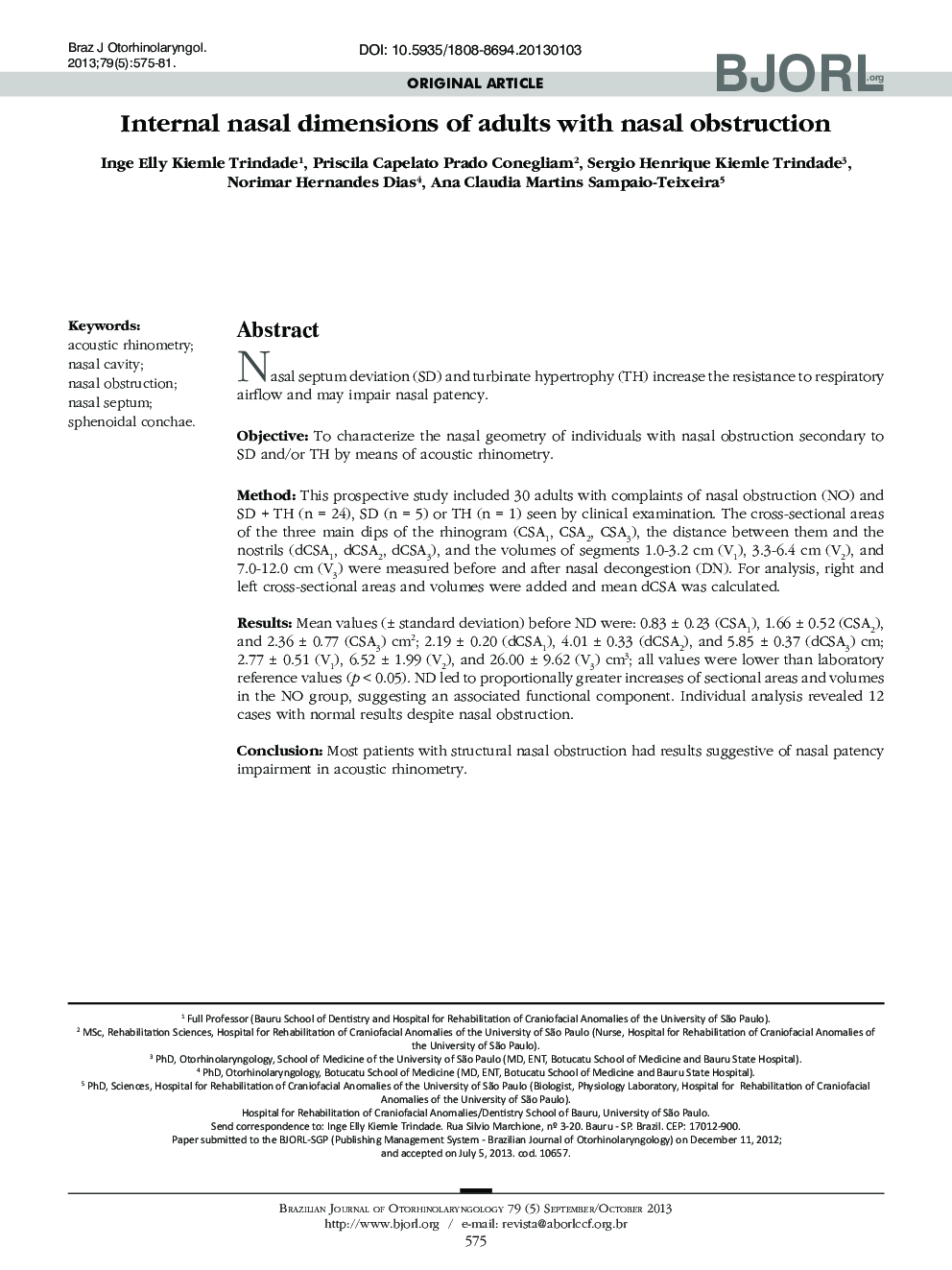| Article ID | Journal | Published Year | Pages | File Type |
|---|---|---|---|---|
| 4106556 | Brazilian Journal of Otorhinolaryngology | 2013 | 7 Pages |
Nasal septum deviation (SD) and turbinate hypertrophy (TH) increase the resistance to respiratory airflow and may impair nasal patency.ObjectiveTo characterize the nasal geometry of individuals with nasal obstruction secondary to SD and/or TH by means of acoustic rhinometry.MethodThis prospective study included 30 adults with complaints of nasal obstruction (NO) and SD + TH (n = 24), SD (n = 5) or TH (n = 1) seen by clinical examination. The cross-sectional areas of the three main dips of the rhinogram (CSA1, CSA2, CSA3), the distance between them and the nostrils (dCSA1, dCSA2, dCSA3), and the volumes of segments 1.0-3.2 cm (V1), 3.3-6.4 cm (V2), and 7.0-12.0 cm (V3) were measured before and after nasal decongestion (DN). For analysis, right and left cross-sectional areas and volumes were added and mean dCSA was calculated.ResultsMean values (± standard deviation) before ND were: 0.83 ± 0.23 (CSA1), 1.66 ± 0.52 (CSA2), and 2.36 ± 0.77 (CSA3) cm2; 2.19 ± 0.20 (dCSA1), 4.01 ± 0.33 (dCSA2), and 5.85 ± 0.37 (dCSA3) cm; 2.77 ± 0.51 (V1), 6.52 ± 1.99 (V2), and 26.00 ± 9.62 (V3) cm3; all values were lower than laboratory reference values (p < 0.05). ND led to proportionally greater increases of sectional areas and volumes in the NO group, suggesting an associated functional component. Individual analysis revealed 12 cases with normal results despite nasal obstruction.ConclusionMost patients with structural nasal obstruction had results suggestive of nasal patency impairment in acoustic rhinometry.
